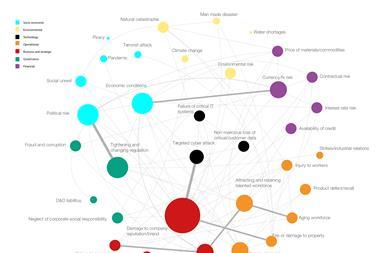by Peter Banham, head of strategy for capital markets business, SunGard

The European financial services industry is at a crossroads. Potential new regulations coming onto the statute books are causing institutions to make fundamental changes to their business models. The eurozone remains under intense economic pressure. However, European countries outside of the developed EU economies are growing and are looking for ways to attract international capital. Effective risk management, innovative deployment of technologies and access to global market networks will help financial services firms across Europe grow over the next few years.
Below are 10 trends that are having the greatest effect on financial services in Europe:
1. Financial institutions of all types are scrutinizing the optimal usage of their capital in the build-up to Basel III, Solvency II and EMIR implementation to ensure regulatory needs are balanced with the investment needs of their businesses.
2. As regulations move from the debating chambers of Brussels onto the statute books of EU countries, the cost of compliance is causing some financial institutions to question the viability of certain business lines and examine more cost-efficient ways of continuing others.
3. Exchanges in Europe are under pressure from investors and regulators to increase transparency into market operations and take precautions against malpractice, including market abuse.
4. Ongoing uncertainty in the eurozone is leading managers to pay more attention to the effect any defaults or changes to the union currency will have on their operations, and to make contingency plans based on portfolio analyses.
5. There will be greater exploration of open source technologies that have the potential to reconfigure and improve the underlying frameworks that the finance industry uses – due largely to the increased interoperability from standardisation, build and adoption, as well as resulting cost savings.
6. Managed services and outsourcing, including software as a service (SaaS), will grow as firms, including asset managers and traders, outsource more for cost efficiency and focus their resources on value added competencies, activities and services that provide competitive advantage. Next generation SaaS solutions will focus on increasing margins and streamlining income opportunities.
7. Access to timely, quality and actionable data will cease to be a “nice to have” and become industry standard across financial services, increasing pressure on institutions to make the most of their “big data” assets.
8. Local exchange groupings in Central and Eastern Europe will continue to mature and develop to facilitate greater capital flows, putting pressure on developed countries to attract and retain listings and investments.
9. European fund managers and brokers will need to navigate an increasing landscape of accessible global exchanges as their clients look beyond the EU to new trading opportunities offered by networks like MILA, ASEAN and CEESEG.
10. Wealth and fund managers will increasingly look east for new sources of revenue as Chinese investors become wealthier and more adventurous.




















No comments yet